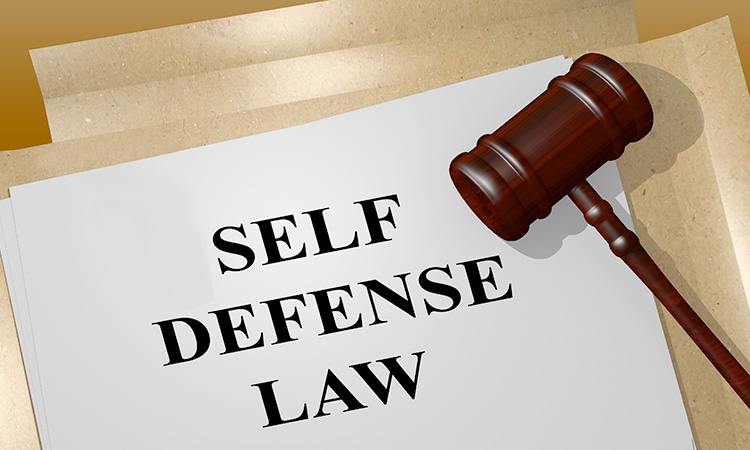
The Right to Protect Yourself: Understanding Self-Defense Laws
In moments when you find your life in danger, you need to have the means to protect yourself. Lawful self-defense ensures that you have the right to protect yourself with reasonable force. What makes this different is how each state has its own set of rules on the matter.
Knowing and understanding self-defense laws can help you gauge the situation. This also includes up to which extent this right plays out. Today, we look at these specifics and details to help you see where you stand.
1. The Conditions for Self Defense
Self-defense is a type of defense raised to certain criminal charges involving force. In this case, a person who feels threatened may use lethal force to defend themselves. These tend to result in charges such as murder.
If you go to court for self-defense, you will need to justify your use of force. This also comes up when defending another person against a threat. The threat must exercise an unlawful use of force that would harm or kill.
There are some details to consider when the act counts for self-defense. This is an important factor, especially if it involves the use of deadly force to stop something. There are two directions to note about this.
- The use of force was in response to someone who instigated the attack.
- The use of force was to stop an imminent attack.
These are only the basic premises, but there is more to the whole situation. In this case, you also have other conditions to note to use self-defense. Consider the following in the use of lethal force:
- Not being the initial aggressor
- Not provoking the attack
- Not a part of a felony (or an attempt thereof)
With these conditions, you can see how the action justifies the claim for self-defense. For this, you would have to note the details about reasonable behavior. This also includes the amount of force used at that moment.
2. The Justifiable Amount of Force
We mentioned how self-defense hinges on the imminence of the threat and the response to that threat. These details need to fall within a reasonable angle for the self-defense claim to hold ground.
Thus, the threat of harm must be immediate. This elicits a response from the defendant to protect themselves.
From this, you now factor in the justifiable amount of force. This pertains to whether the action taken was within reason and thus administered with the proportionate amount. Consider these factors when looking at it.

Reasonable Fear of Harm
We mentioned earlier how the potential threat has to be imminent. Along with that, the victim must perceive the threat of harm that the assailant posed. This meant that the person that posed a threat has the capability of following through.
Proportionate Response to Action
The other aspect to this is the response to that action. For this to count as self-defense, the degree of force must match the one that comes from the threat.
Otherwise, the use of force would come off as excessive. This leaves the argument of self-defense inapplicable.
With these two pointers in mind, let us look at an example. An armed assailant with the intent to harm or kill you can bring forth this reasonable fear.
Using lethal force to stop this kind of threat counts as self-defense. In this scenario, you used the proportionate and justifiable amount of force.
3. Standing Your Ground and the Duty to Retreat
Self-defense laws vary by territory. Each one has a different set of stipulations on how to approach the rules of self-defense. For this, one notable detail is about the duty to retreat.
The duty of retreat requires the person to make an escape attempt first. Once they attempt that, they can take defensive action.
In most states, one no longer has to retreat to qualify for self-defense. It is now replaced with the use of non-fatal force to defend oneself from attacks.
Still, the escape attempt still stands as a requirement in most states. Thus, it still pushes the duty to retreat before a person can use lethal force.
Compare this to the Georgia self-defense laws. You would notice the stipulation about the Stand Your Ground law. You find this in the Official Code of Georgia 16-3-23.1, which connects to the Castle Doctrine.
4. The Castle Doctrine
The Stand Your Ground law mentions that the one who uses force to defend themselves, others, and their home has no duty to retreat. Rather, they have the right to stand their ground.
Thus, when the defendant is in his home, he does not have the requirement to retreat. They can stand their ground and use deadly force in self-defense.
This comes to play in situations such as invasions and unlawful entry. You do not need to plot your escape. Instead, you can stand your ground and use force to defend yourself.
Keep this in mind when you are in a trial alongside a Georgia self-defense lawyer. It can help with cases involving home invasions.
5. How to Find a Good Self-Defense Lawyer?
You might end up asking, “Where do I find a self-defense lawyer near me?” When you look for a capable self-defense lawyer to represent you, make sure not to delay that process.
You want to have a professional advise you of the best course of action when you find yourself on trial. You want a powerful attorney by your side, even if it is an act of self-defense.
Understand Self Defense Laws Today
By knowing the workings of self-defense laws, you can see how this helps you when you feel threatened. Even so, it’s best to have a self-defense lawyer that can help you win the case.
You can trust our lawyers to provide a straightforward and honest assessment of your case. We can also guide you in taking the best legal option to pick. Visit us today at www.mailletcriminallaw.com and we will help you get started.




